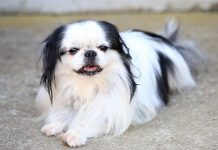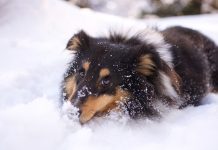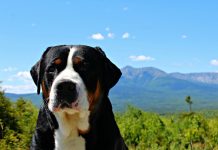History and Origins of the Irish Setter Breed

The Irish Setter, known for its stunning red coat and friendly demeanor, has a rich history dating back several centuries in Ireland. The breed’s origins can be traced to the early 18th century when it was developed as a hunting dog primarily for locating and pointing game birds, particularly grouse and pheasants.
The exact ancestry of the Irish Setter is somewhat uncertain, but it is believed to have descended from a combination of established breeds including Spaniels, Pointers, and other setters like the English Setter. Early Irish Setters were bred for their keen scenting abilities, stamina, and agility in the field.
By the 19th century, Irish Setters had become well-established as a distinct breed in Ireland. They were popular among sportsmen for their exceptional hunting skills and striking appearance. The breed’s distinctive solid red coat became a hallmark trait, setting it apart from other setters and pointing breeds.
The Irish Setter’s popularity further spread beyond Ireland, particularly to England and later to America. In the late 19th and early 20th centuries, breeders focused on refining the breed’s appearance and temperament, aiming to produce a dog that was not only an excellent hunter but also a beloved companion and show dog.
Today, the Irish Setter is cherished worldwide for its beauty, intelligence, and affectionate nature. While its hunting abilities remain intact, the breed is also highly regarded as a family pet and competitor in various dog sports and activities.
Physical Characteristics and Appearance of Irish Setters
The Irish Setter is known for its elegant and athletic build, coupled with a striking deep red coat and friendly expression. Here are the key physical characteristics and appearance traits of the Irish Setter:
- Size: Irish Setters are considered a large breed. Adult males typically stand between 23 to 27 inches (58 to 69 cm) at the shoulder, while females are slightly smaller, ranging from 21.5 to 25 inches (55 to 64 cm). They usually weigh between 60 to 70 pounds (27 to 32 kg).
- Coat: The Irish Setter’s most distinguishing feature is its glossy, fine-textured coat that comes in shades of rich red. The coat should be straight and feathered on the ears, chest, belly, tail, and backs of the legs. Regular grooming is necessary to prevent matting and keep the coat looking its best.
- Head: The breed’s head is long and lean, with a slightly domed skull and a well-defined stop. Irish Setters have a refined and noble expression, with dark brown or hazel eyes that convey intelligence and warmth. The ears are set low and hang close to the head, framing the face.
- Body: Irish Setters have a graceful yet sturdy body, with a deep chest, well-sprung ribs, and a strong, level back. The hindquarters are muscular and well-developed, providing power and drive for efficient movement.
- Tail: The tail is moderately long and carried in a lively manner, often described as “wagging with enthusiasm.” The tail should not be docked and is covered with feathering that complements the coat.
- Gait: Irish Setters move with an effortless and ground-covering gait, reflecting their athleticism and endurance. Their movement is smooth, balanced, and free-flowing.
- Expression: Irish Setters are known for their friendly and intelligent expression. They should exude confidence and approachability, with a keen interest in their surroundings.
Irish Setters are overall well-proportioned and symmetrical dogs, showcasing a blend of elegance and athleticism. Their distinctive red coat, coupled with their friendly disposition and spirited personality, makes them a beloved breed among dog enthusiasts and families alike. Proper care, regular exercise, and attention to grooming are essential for maintaining the Irish Setter’s health and appearance.
Irish Setter Temperament and Personality Traits
The Irish Setter is known for its outgoing, affectionate, and energetic temperament. This breed is characterized by its friendly nature, intelligence, and love for human companionship. Here are the key temperament and personality traits of the Irish Setter:
- Friendly: Irish Setters are famously friendly dogs, often described as “velcro dogs” due to their strong bond with their families. They are sociable and enjoy interacting with people, including children and strangers. They thrive on companionship and are not suited to be left alone for long periods.
- Playful: Irish Setters have a playful and exuberant demeanor. They retain their puppy-like enthusiasm well into adulthood and enjoy engaging in games and activities with their owners. Their joyful nature makes them excellent playmates for active families.
- Affectionate: This breed is highly affectionate and loves to be close to their family members. Irish Setters are known for their gentle and loving disposition, making them excellent companions for households with children and other pets.
- Energetic: Irish Setters have a high energy level and require regular exercise to stay healthy and happy. They excel in activities like running, hiking, and playing fetch. A tired Irish Setter is a well-behaved Irish Setter, so sufficient exercise is essential to prevent boredom and destructive behaviors.
- Intelligent: Irish Setters are intelligent dogs that respond well to positive, reward-based training methods. They enjoy mental stimulation and excel in obedience training, agility, and other canine sports. However, they can be independent thinkers, so consistent training and patience are necessary.
- Curious: Irish Setters are naturally curious and enjoy exploring their environment. They have a keen sense of smell and may be prone to following scents, so a securely fenced yard is recommended to prevent wandering.
- Alert: While not typically guard dogs, Irish Setters are alert and will bark to alert their owners of approaching strangers or unusual sounds. They are more likely to greet intruders with enthusiasm rather than aggression.
- Sensitive: Irish Setters are sensitive dogs that respond best to positive reinforcement and gentle handling. Harsh training methods or scolding can be detrimental to their sensitive nature.
- Social: Proper socialization from a young age is important for Irish Setters to ensure they are comfortable and well-behaved around other dogs and people. Early exposure to various environments, sounds, and experiences helps them grow into well-rounded adults.
In summary, the Irish Setter is a delightful breed known for its friendly and affectionate nature. They thrive in active households where they receive plenty of attention, exercise, and mental stimulation. With proper training, socialization, and care, Irish Setters make loyal and loving companions for individuals and families alike.
Training and Socialization Needs for Irish Setters
Irish Setters are intelligent and eager to please, but they can also be independent thinkers. Training and socialization are essential to channel their energy and develop good manners. Here are some tips for training and socializing your Irish Setter:
- Start Early: Begin training and socialization as soon as you bring your Irish Setter puppy home. Early exposure to different people, animals, environments, and experiences helps build confidence and prevents behavioral issues later on.
- Positive Reinforcement: Use positive reinforcement techniques such as treats, praise, and play to motivate and reward your Irish Setter during training sessions. They respond well to gentle, consistent, and patient training methods.
- Obedience Training: Teach basic commands like sit, stay, come, and heel. Irish Setters are intelligent and enjoy learning new tasks, so engage their minds with regular training sessions.
- Exercise Needs: Provide ample daily exercise to satisfy your Irish Setter’s high energy level. Long walks, runs, hikes, and play sessions are essential to keep them physically and mentally stimulated.
- Socialization: Expose your Irish Setter to different people, including children, adults, and strangers. Also, introduce them to other dogs and pets in a controlled and positive manner. This helps prevent shyness, fearfulness, or aggression towards unfamiliar situations.
- Consistency: Be consistent in your training approach and expectations. Set clear rules and boundaries for behavior and enforce them consistently. Irish Setters thrive with structure and routine.
- Patience and Positive Reinforcement: Irish Setters respond best to positive reinforcement and praise. Avoid harsh corrections or punishment, as it can damage their sensitive nature and hinder their progress.
- Chew Training: Irish Setters are known for their love of chewing, especially as puppies. Provide appropriate chew toys and redirect their chewing behavior to prevent destructive habits.
- Training Classes: Consider enrolling your Irish Setter in obedience classes or canine sports such as agility or flyball. These activities provide mental stimulation and strengthen the bond between you and your dog.
- Socializing Outside the Home: Take your Irish Setter to various places like parks, pet-friendly stores, and events to expose them to different environments and people.
By investing time and effort in training and socialization, you can help your Irish Setter become a well-mannered, confident, and happy companion. Consistent training, positive reinforcement, and plenty of love and attention will foster a strong bond and mutual understanding between you and your Irish Setter.
Health Considerations and Common Issues in Irish Setters
Irish Setters are generally healthy dogs, but like all breeds, they may be prone to certain genetic health conditions. Responsible breeding practices and regular veterinary care can help minimize the risk of these health issues. Here are some common health considerations for Irish Setters:
- Hip Dysplasia: This is a hereditary condition where the hip joint doesn’t develop properly, leading to arthritis and lameness. Responsible breeders screen their breeding stock for hip dysplasia to reduce its incidence in puppies. Maintaining a healthy weight and providing joint supplements can also help manage hip dysplasia.
- Elbow Dysplasia: Similar to hip dysplasia, elbow dysplasia is a developmental condition affecting the elbow joint. It can cause lameness and discomfort, particularly in active dogs like Irish Setters. Early diagnosis and appropriate management are essential.
- Progressive Retinal Atrophy (PRA): PRA is a group of genetic diseases that cause the degeneration of the retina, leading to progressive vision loss and eventual blindness. Regular eye exams by a veterinary ophthalmologist can help detect PRA early.
- Hypothyroidism: Irish Setters may be prone to hypothyroidism, a condition where the thyroid gland doesn’t produce enough hormones. Symptoms include weight gain, lethargy, and skin issues. Blood tests can diagnose hypothyroidism, and treatment usually involves lifelong medication.
- Bloat (Gastric Dilatation-Volvulus): This is a life-threatening condition where the stomach fills with gas and twists on itself. Bloat requires immediate veterinary attention. Feeding multiple smaller meals throughout the day, avoiding exercise immediately after eating, and using elevated feeding bowls can help reduce the risk of bloat.
- Epilepsy: Some Irish Setters may develop epilepsy, a neurological disorder characterized by recurrent seizures. Treatment often involves antiepileptic medications to manage and reduce seizure activity.
- Cancer: Irish Setters are at a higher risk for certain types of cancer, including lymphoma and hemangiosarcoma. Regular veterinary check-ups and early detection are crucial for prompt treatment and management.
- Allergies: Like many other breeds, Irish Setters can be prone to allergies, including environmental allergies (pollen, dust mites) and food allergies. Allergy testing and appropriate management strategies can help alleviate symptoms.
- Heart Conditions: Irish Setters may be predisposed to certain heart conditions, such as dilated cardiomyopathy. Regular veterinary exams, including cardiac screenings, are important for early detection and management.
- Ear Infections: Irish Setters have floppy ears that can trap moisture and debris, increasing the risk of ear infections. Regular ear cleaning and inspection can help prevent infections.
It’s important for Irish Setter owners to work closely with a reputable veterinarian and prioritize preventive care, including vaccinations, parasite control, and regular health screenings. Additionally, choosing a responsible breeder who screens for genetic health conditions can greatly reduce the likelihood of inherited disorders in Irish Setter puppies.
Living with an Irish Setter: Suitable Environments and Lifestyle Considerations

Irish Setters are active, social dogs that thrive in environments where they receive plenty of exercise, mental stimulation, and companionship. Before bringing home an Irish Setter, consider the following lifestyle factors:
- Space: Irish Setters are large dogs and require sufficient space to move around comfortably. While they can adapt to apartment living with regular exercise, they are best suited to homes with a securely fenced yard where they can run and play.
- Exercise: Irish Setters have high energy levels and need daily exercise to stay healthy and happy. Plan for at least 1-2 hours of vigorous exercise each day, including brisk walks, runs, play sessions, and interactive games. Lack of exercise can lead to boredom and behavioral issues.
- Socialization: Irish Setters are social dogs that enjoy spending time with their families. They may experience separation anxiety if left alone for long periods, so avoid leaving them alone for extended periods. Proper socialization from a young age helps them develop into well-adjusted adults.
- Training: Irish Setters are intelligent but can be independent-minded. Consistent and positive training methods are essential to channel their energy and prevent undesirable behaviors. Early obedience training and ongoing reinforcement are recommended.
- Grooming: The Irish Setter’s coat requires regular grooming to keep it healthy and free from mats and tangles. Weekly brushing, occasional baths, and attention to ear cleaning are important parts of their grooming routine.
- Family Dynamics: Irish Setters are affectionate and do well in households where they receive attention and interaction from their family members. They are generally good with children but should always be supervised during play due to their size and exuberance.
- Companionship: Irish Setters thrive on companionship and do best in homes where they are not left alone for long periods. They enjoy being part of family activities and may develop behavioral issues if neglected or isolated.
- Safety Precautions: Irish Setters have a strong prey drive and may chase small animals if not properly trained. Ensure they are securely leashed or contained in a fenced area during outdoor activities.
In summary, Irish Setters are wonderful companions for active individuals and families who can provide the time, attention, and exercise this energetic breed requires. With proper care, training, and socialization, Irish Setters can thrive as loyal and loving members of the family for many years.
Irish Setter Variations and Breeding Practices
Irish Setters are a distinct and recognizable breed known for their striking red coat and friendly disposition. While the breed standard primarily recognizes one type of Irish Setter, there are some variations and considerations related to breeding practices within the breed.
Irish Setter Variations:
- Field and Show Lines: Over time, Irish Setters have been bred for different purposes, leading to variations in conformation and temperament. Field lines are bred for hunting and field trials, emphasizing athleticism, endurance, and hunting instincts. Show lines are bred for conformation and appearance, focusing on the breed standard’s physical characteristics and temperament suitable for the show ring.
- Color Variations: The breed standard for Irish Setters specifies a rich, solid red coat without any white markings, although some individuals may have small white patches on the chest or toes. Breeders strive to produce a deep, lustrous red color that is synonymous with the breed. While other color variations may occur, such as darker “mahogany” shades, these are typically not accepted in the show ring according to breed standards.
- Size and Conformation: Irish Setters are generally a large breed, with differences in size and conformation between individuals bred for fieldwork versus show. Field-bred Irish Setters tend to be slightly smaller and more compact, with a more athletic build optimized for agility and stamina in the field. Show-bred Irish Setters are often larger and have a more elegant appearance, emphasizing the breed’s graceful lines and flowing coat.
Breeding Practices:
Responsible breeding practices are essential to preserve the health, temperament, and breed standards of Irish Setters. Here are some considerations for breeding Irish Setters:
- Health Testing: Reputable breeders prioritize health testing to screen for genetic conditions that can affect Irish Setters, such as hip dysplasia, elbow dysplasia, progressive retinal atrophy (PRA), and autoimmune disorders. Health testing helps reduce the risk of passing on hereditary health problems to future generations.
- Conformation and Temperament: Breeders should adhere to the breed standard established by kennel clubs to ensure that Irish Setters maintain their distinctive appearance and desirable temperament. This includes characteristics such as size, coat color, head shape, gait, and overall conformation.
- Pedigree Analysis: Responsible breeders carefully select breeding pairs based on their pedigree, health clearances, temperament, and compatibility to produce healthy, well-rounded puppies. They aim to improve the breed with each generation while maintaining genetic diversity.
- Ethical Practices: Ethical breeders prioritize the well-being of their dogs and puppies, providing proper care, nutrition, socialization, and veterinary attention. They ensure that puppies are raised in a loving environment and are well-prepared for life as family companions.
- Breeding Goals: Breeders may have different goals depending on whether they focus on field work, conformation showing, or companion animals. Some breeders prioritize maintaining the breed’s working abilities and instincts, while others emphasize specific physical attributes suited for the show ring.
- Health and Longevity: The goal of responsible breeding is to produce healthy Irish Setters with a long lifespan. Breeders aim to minimize the incidence of genetic disorders and promote overall health and vitality in their breeding programs.
By adhering to responsible breeding practices and prioritizing the health and well-being of Irish Setters, breeders contribute to the preservation and improvement of this beloved breed. Prospective puppy buyers should seek out reputable breeders who are committed to producing healthy, well-adjusted Irish Setters that embody the breed’s unique qualities and characteristics.
50 Best Names with Meanings for Irish Setters
Naming your Irish Setter can be a fun and meaningful experience. Here’s a list of 50 great names along with their meanings that could suit your Irish Setter perfectly:
Male Irish Setter Names:
- Finn – Meaning “fair” or “white.”
- Rory – Derived from Gaelic meaning “red king.”
- Angus – A strong and traditional Scottish name.
- Rowan – From the Gaelic word for “red.”
- Conor – Means “lover of hounds” in Irish.
- Bran – Means “raven” in Welsh mythology.
- Cormac – Meaning “charioteer” or “raven.”
- Aidan – Derived from “fire” or “fiery.”
- Flynn – Means “son of the red-haired one.”
- Cillian – Means “little church” in Irish Gaelic.
- Oscar – Derived from Gaelic meaning “deer lover.”
- Dermot – From “free man” or “without envy.”
- Griffin – Means “strong lord” or “powerful.”
- Cian – Means “ancient” or “enduring.”
- Ewan – Scottish name meaning “young warrior.”
- Lorcan – Meaning “little fierce one” in Irish.
- Tadhg – Pronounced “tiger,” meaning “poet” or “philosopher.”
- Riley – Means “valiant” or “courageous.”
- Seamus – Irish form of James, meaning “supplanter.”
- Sullivan – Means “dark-eyed” or “hawk-eyed.”
Female Irish Setter Names:
- Aoife – Pronounced “ee-fa,” meaning “beautiful” or “radiant.”
- Fiona – Means “fair” or “white.”
- Niamh – Pronounced “neev,” meaning “bright” or “radiant.”
- Caoimhe – Pronounced “kee-va,” meaning “gentle” or “beautiful.”
- Maeve – Means “intoxicating” or “she who intoxicates.”
- Siobhan – Pronounced “shi-vawn,” meaning “God is gracious.”
- Molly – Derived from “Mary,” meaning “beloved.”
- Bridget – Means “exalted one” or “strength.”
- Roisin – Pronounced “ro-sheen,” meaning “little rose.”
- Cara – Means “friend” or “beloved.”
- Aisling – Means “dream” or “vision.”
- Sorcha – Pronounced “surk-ha,” meaning “radiant” or “bright.”
- Fidelma – Means “beauty” or “attractive.”
- Saoirse – Pronounced “seer-sha,” meaning “freedom” or “liberty.”
- Deirdre – Means “sorrowful” or “broken-hearted.”
- Maura – Variant of Mary, meaning “bitter” or “beloved.”
- Brigid – Derived from the Celtic goddess of poetry and wisdom.
- Tara – Named after the Hill of Tara in Ireland.
- Aine – Pronounced “awn-ya,” meaning “radiance” or “splendor.”
- Maeve – Means “intoxicating” or “she who intoxicates.”
Gender-neutral Irish Setter Names:
- Finley – Means “fair warrior” or “fair hero.”
- Quinn – Means “wisdom” or “chief.”
- Rory – Can be used for both males and females, meaning “red king.”
- Casey – Means “brave” or “vigilant.”
- Murphy – Derived from “sea warrior.”
- Riley – Suitable for both genders, meaning “valiant” or “courageous.”
- Shannon – Named after the River Shannon in Ireland.
- Sullivan – Can be used as a unisex name, meaning “hawk-eyed.”
- Teagan – Means “attractive” or “beautiful.”
- Cassidy – Derived from “curly-haired” or “clever.”
Choose a name that resonates with you and reflects your Irish Setter’s personality, appearance, or heritage. Whether you prefer traditional Irish names, meaningful Gaelic words, or unique options, these names should provide inspiration for finding the perfect name for your beloved Irish Setter!

In conclusion, this overview has provided valuable insights into the Irish Setter dog breed, highlighting its distinctive characteristics and essential care considerations. Throughout our exploration, we’ve delved into the history, unique traits, and important aspects of owning an Irish Setter.
Irish Setters are known for their vibrant personality, intelligence, and energetic nature. They thrive on companionship and physical activity, making them well-suited for active families and individuals. Proper exercise, mental stimulation, and positive training are essential for ensuring the health and happiness of an Irish Setter.
As you embark on your journey with an Irish Setter, it’s important to provide them with love, attention, and proper care. With patience and understanding, you can develop a strong bond and enjoy a fulfilling companionship with this beautiful and spirited breed.
Remember to consult with veterinarians and experienced dog trainers for specific guidance tailored to your Irish Setter’s individual needs. By nurturing and caring for your Irish Setter, you’ll create lasting memories and cherish the joy they bring into your life.






























